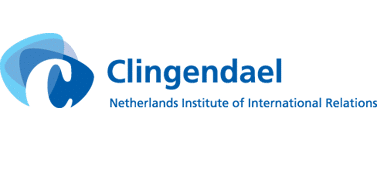In partnership with:

Summary
Two leading European think tanks –one Dutch (the Clingendael Institute) and one Spanish (the Elcano Royal Institute)– support the idea of a ‘European open strategic autonomy’ but argue that, in its pursuit, the EU should avoid seven pitfalls: (1) to be lured by protectionism; (2) to see quick fixes in reshoring supply chains or subsidising domestic capacity to address strategic dependencies; (3) to pick national or binational winners; (4) to try to set global standards in areas in which the EU is not technologically competitive; (5) to replace one dependency with another and in the name of independence undermine interdependence; (6) to pursue national goals instead of European ones, and to pay only limited attention to EU-level governance and measurement criteria for an ‘open strategic autonomy’; and (7) to ask for more resources to achieve economic sovereignty without a plan where and how to use them. When it comes to the digital transition, a number of proposals for the governance of an ‘open strategic autonomy’ can be identified that should be considered: IPCEIs (‘Important Projects of Common European Interests’) or a system in which the Council, the Commission and the Parliament would monitor the advancement by each member state and the EU as a whole towards the goals of the Digital Decade. Above all, the EU should develop a European mechanism to measure progress and ensure investments meet common criteria for ‘open strategic autonomy’. To that end, the EU should consider a ‘European semester’ on ‘open strategic autonomy’.
Analysis
Where does autonomy start and openness end?
Spain and the Netherlands helped launch an EU-wide discussion on ‘open strategic autonomy’ after publishing a joint non-paper on the topic in March 2021.[1] The paper was an effort by researchers from the Elcano Royal Institute and the Clingendael Institute to move that conversation forward. It draws on a joint seminar held in Madrid in November 2021.
‘Open strategic autonomy’ has come to describe the EU’s policies to promote economic sovereignty. In this pursuit the EU aims to protect the single market and reduce strategic dependencies, promote European values and regulatory standards, and create the circumstances for a strong European economy in which its companies can prosper and successfully compete regionally and globally.
Under the guise of ‘strategic autonomy’ the EU is developing a more assertive trade policy and a more ambitious industrial policy. But, while embracing the notion of ‘strategic autonomy’ in their non-paper, Spain and the Netherlands insisted on adding the adjective ‘open’ to signal the need to avoid protectionism. This has not made the policy implications any clearer. There appears to be an incompatibility between ‘openness’ on the one hand and ‘autonomy’ on the other. The European Commission says that open strategic autonomy means that the EU should be ‘open where we can, but autonomous where we must’. Though a good one-liner, it says little about the process needed to establish where openness ends and autonomy starts, or, in fact, what either openness or autonomy mean. Common criteria must be established.
There is an external and an internal dimension to ‘openness’ and ‘autonomy’. The EU wants to avoid protectionism and at the same time develop an industrial policy that allows European firms to compete with US, Chinese and others. To achieve this the EU must pursue a robust industrial policy, but it must avoid favouritism inside the EU. Brussels should avoid the temptation of picking winners. European champions that are really national or binational ones would end up being limited to a few countries. At the same time the EU must invest in the capacity to reduce strategic dependencies. Horizontal rather than vertical industrial policies should be pursued. This requires striking a delicate balance. To get there, a common agreed governance framework on open strategic autonomy should be developed that avoids the following seven pitfalls.
The seven pitfalls to avoid
A first pitfall is that –despite the adjective ‘open’– the pursuit of autonomy inevitably tends towards protectionism. The EU is developing more unilateral trade instruments –including defensive ones–, making the EU vulnerable to the criticism that it is embarking on a protectionist trajectory and opening it to challenges at the WTO. Openness should be the default, while the EU better understands the critical dependencies affecting the single market. The EU must differentiate between critical or strategic dependencies that impact the economic and political security of the Union, and valid international competition. The European Commission has identified 137 products in sensitive sectors, 34 of which have a limited possibility of diversification. They primarily relate to high value-added and technologically advanced products and intermediate goods. But to avoid the claim of being protectionist as much as possible, the EU should emphasise diversification in supply chains, instead of control. It should seek controlled interdependence, not independence. Alternatively, instead of seeking to control entire supply chains of finished products, the EU should seek to occupy strategic positions in global value chains of certain products. This should be carried out through a robust industrial policy that includes both large companies, but also SMEs, across EU countries.
A second pitfall is the supposed quick fix to ‘reshore’ supply chains or to subsidise domestic capacity to address strategic dependencies. This is a risk with the EU’s ‘European Chips Act’. The EU has identified semiconductors as a sector of strategic importance, which faces supply shortages today due to increased demand and on which the EU is heavily dependent from outside suppliers. But by investing in building domestic semiconductor capacity in an internationally uncoordinated manner the EU runs the risk of contributing to global overcapacity in the longer term and sparking vicious subsidy cycles and trade tensions. To avoid these risks the EU should coordinate supply-chain risk management internationally, share information on demand and develop resilience mechanisms –such as strategic stockpiling– before crises arise. The Transatlantic Trade and Technology Council offers one obvious setting for doing this.
A third pitfall is for the EU to pick national or binational winners to allow them to compete in strategically sensitive sectors internationally. This would come at the expense of stifling innovation within the EU, including major differences between member states. SMEs would also risk lagging behind if they are not able to design or manufacture high-end products. The EU must strike a balance: instead of picking winners, the EU should identify key European industrial eco-systems that deserve support and help forge new EU-wide cooperation to spur innovation in strategic sectors. Vertical policies should be embraced where they contribute to EU-wide ‘strategic autonomy’ without undermining the level playing field within the Union. To this end, the EU should consider expanding the use of Important Projects of Common European Interests (IPCEI).
A fourth pitfall is to expect the ‘Brussels effect’ to do the EU’s work for it. The EU’s role as a global standard-setting institution is important and it can be a key element in the EU’s toolbox to promote economic sovereignty. But the EU can only use this leverage in areas where it is technologically prominent and competitive. The EU should seek leverage in critical supply chains by making sure that European firms remain competitive there, including through a strengthened R&D&I policy. The EU cannot strive to just provide the playground, set the rules and be the referee. It needs to be a top player in the global economy in order to shape global standards and values.
A fifth pitfall is to replace one dependency with another, either by replacing a single source of supply with another or by finding substitute products that themselves create new dependencies. The latter is particularly relevant in the context of the green energy transition, as Europe faces the prospect of being reliant on a handful of countries for specialty metals critical to renewables and other technologies needed to pursue its Fitfor55 agenda. Once more, the premise needs to be to develop as much as possible domestic innovation and technologies, even disruptive ones, and seek diversification in all inputs of strategic relevance.
A sixth pitfall is for European governments to pursue their own national goals, and to pay only limited attention to governance and measurement criteria for ‘open strategic autonomy’ at the EU level. The reality of Europe’s economic interdependence means that autonomy cannot be the end goal. Instead, it is a process that requires continued monitoring, governance and assessment, and the inclusion and participation of all relevant stakeholders both at the subnational, national and European levels. The decision-making process of what is strategic for the EU needs effective and legitimate governance structures.
A seventh pitfall is to ask for more resources to achieve strategic autonomy without a plan on where and how to deploy these resources. To overcome the COVID-19 crisis, the EU decided to pool common resources and agreed the Next Generation EU (NGEU) instrument. This was a historic decision. €750 billion in public money will be deployed in the next few years to prepare EU economies for the digital age and embark on the green transition. Public European money will be distributed under the condition that EU member states complete concrete milestones and reforms. This is based on a sound logic and should be the modus operandi going forward.
The debate on ‘open strategic autonomy’ cannot be separated from the effective use of the NGEU funds and the deepening of Europe’s economic and monetary union under the framework of the European semester. The temptation in the past was to ask for a sizable budget for the Eurozone. This debate ended in political deadlock. It is more effective to identify joint common challenges and objectives and then decide what common resources are needed to address them. In this regard, in order to pursue the above objectives it is important to agree on common resources for the EU.
All plans cost money. We call on the EU to think creatively about how monetary policy can contribute to promoting the European ‘open strategic autonomy’. A joint European debt instrument, even of limited size, would lower the financing cost but also help with the internationalisation of the euro, which in the future might even take a digital form. A stronger international role for the euro will contribute to achieving ‘open strategic autonomy’ as it would enable the EU to shield itself better from instances of economic coercion, such as the use of extraterritorial sanctions by third countries. It would also enable the EU-27 to deploy extraterritorial sanctions itself if it so desired.
Open strategic autonomy and the digital transition
When it comes to the digital transition specifically, three proposals for the governance of ‘open strategic autonomy’ can be identified, which are also relevant to the broader debate. After all, one of the great mistakes of the Lisbon Strategy of 2000 –that was going to make of Europe ‘the most competitive and advanced knowledge economy in the world’ in 10 years– was the Open Method of Coordination, which was an empty system of governance. Instead, there are two kinds of complementary systems for the digital transition. One is the IPCEIs that involve more than one EU member state, public or state support (up to 50%) and a broad R&D&I ambition. There are several IPCEIs in the works, as in the field of semiconductors. The EU should encourage similar projects in other fields. That means choosing collective European sets of champions, not just national or binational ones.
An alternative system is one in which the Council, the Commission and the Parliament would monitor the progress made by each Member State and the EU as a whole to reach the goals of the Digital Decade.[2] Each country would draw an itinerary, perhaps call it a National Decade Strategic Roadmap, and the Commission would annually report on the progress. The proposal is currently limited to the digital sphere but should be open to other important technological fields (like health and biochemistry) and be geared towards concrete results. Where relevant, this could include like-minded external partners from Asia or North America.
Ultimately, any governance system needs instruments to measure what is being achieved. The EU has a tool, the International Digital Economy and Society Index (I-DESI), that includes the EU Member States plus 18 other countries. The Index should be accelerated since the delay between fact-finding and publication is too great. It could also be expanded to include other technologies and industries, in quantitative, but also in qualitative terms. Again, here the framework of the European semester with its country-specific recommendations and with the carrot of European funds for specific milestones and reforms, following the logic of the NGEU instrument, might be the right path into the future.
Taken together, policies that aim to avoid these pitfalls will contribute to a more effective and transparent implementation of the ‘open strategic autonomy’.
[1] ‘Non-paper on strategic autonomy while preserving an open economy’, 24/III/2021, https://www.permanentrepresentations.nl/documents/publications/2021/03/24/non-paper-on-strategic-autonomy.
[2] ‘Proposal for a Decision of the European Parliament and of the Council establishing the 2030 Policy Programme “Path to the Digital Decade”’, Brussels, 16/IX/2021.
Image: A bundle of optical fibers. Photo: Denny Müller.





